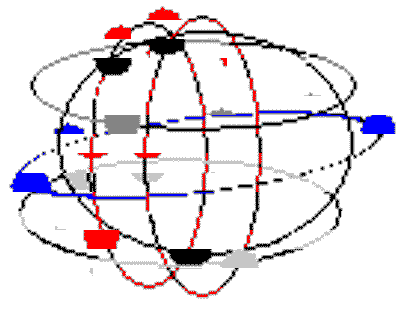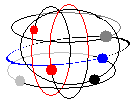
apologies to Peter Baldes for taking so long (5 years) for a shoutback: he enlarged my "logo" GIF and broke it into small square GIFs that cycle independently of each other in an HTML table. The GIF above (right) is a screencapture of one particular probability cloud.
Update: smart remark about semi-related topic deleted.
Update 2: made a more elaborate version of the large GIF above, where I overlaid an animation of stage's.

